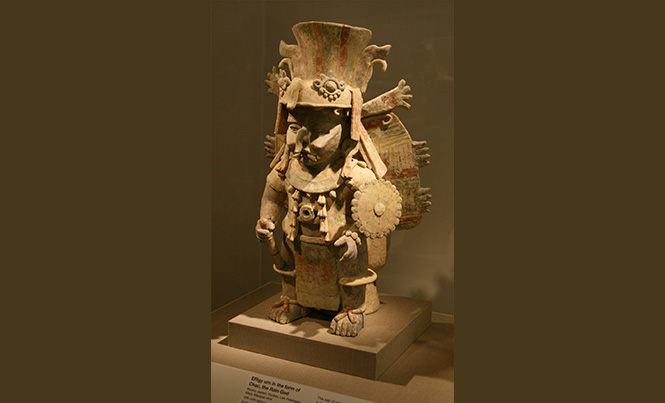
He was known as Chaac to the Mayas, and Tlaloc to the Aztecs. This god is depicted in the facades of the ancient buildings of the pre-hispanic Maya world, with a long nose, fangs and large eyes. He is also represented with a type of axe in his hand, shaped like lightning or thunder. This god appears more than 200 times in Maya codices such as the Madrid and the Dresden. For the Aztecs, he was the bat god.
This god is also related to the Maya underworld, crops, abundance, and life; he was and is one of the most spoiled gods in the Yucatan because of the droughts. Even today, in the month of July, rituals called Chaac Chac are performed in his honor. These rituals are performed in Maya communities and consist of prayers, accompanied by dance and music to invoke the rain for good harvests. The villagers mount an altar made of sticks and palms, where they place food to serve as an offering. This ritual, like many others, has elements of Spanish Catholicism and the Mayan religion. If you attend one of them, prepare yourself to see rain almost immediately.
Sources:
Soustelle, Jacques. The Maya
www.arqueologíamexicana.com